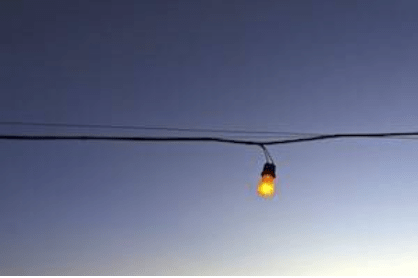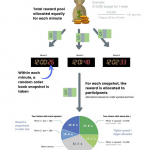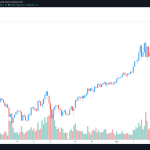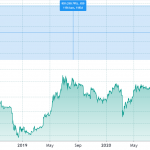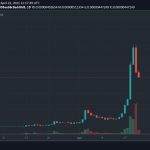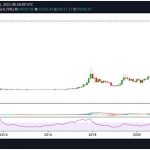As Puerto Rico sets out to rebuild its electric system knocked out by Hurricane Maria in September, can it become a model for renewable energy? Scores of government agencies, think tanks and energy experts are mulling that question, as much of the U.S. Caribbean territory still lacks electricity.
As Puerto Rico sets out to rebuild its electric system knocked out by Hurricane Maria in September, can it become a model for renewable energy?
Scores of government agencies, think tanks and energy experts are mulling that question, as much of the U.S. Caribbean territory still lacks electricity.
This week, the Puerto Rico Energy Resiliency Working Group, created under the New York governor’s office, released a 63-page plan for the island to “Build Back Better” over a decade at a cost of $17.6 billion. Among its recommendations: $1 billion in microgrids for critical infrastructure and rural communities.
Experts say the challenge is not technical. Costs have dropped so much for solar, wind and other technologies that renewables can be cost-effective. The big issue instead is political and financial: Is there the concerted will and independent supervision required, and where’s the money for it?
Before the storm, debt-burdened Puerto Rico had relied mainly on a government utility that runs big fuel-fired power plants to supply electricity to its 3.4 million residents.
Puerto Rico set targets for renewables years back that it has failed to reach. Its recovery from Maria has not been well-coordinated between federal and local government agencies, community groups, businesses and others. Those factors don’t bode well for making the island a model quickly, experts say.
Searching for the Best Solar Installer in the City of Angels
An enviably comfortable climate, with plenty of sunny days, numbers among the things that attract so many to Los Angeles, and keeps residents from moving elsewhere. All that sunshine also makes Los Angeles one of the more attractive places in the U.S. to install a residential solar energy system.
“The problem is systemwide in scale, and you’re dealing with essentially a bankrupt government and bankrupt power company,” Matthew Perks, founder of New Energy Events (NEE), said. NEE organizes the annual Caribbean Renewable Energy Forum.
Four months after the storm, with no centralized plan to guide rebuilding, it’s been “battlefield triage,” he said, adding that “they’re [still] just trying to get the lights on.”
Rocky Mountain Institute (RMI), an independent nonprofit, is working with groups in Puerto Rico on a long-term plan for cleaner, cheaper energy. Part of the effort: microgrids, similar to the solar panel and battery back-up system that Tesla installed to power the Children’s Hospital in San Juan after the hurricane. Microgrids could serve a home, neighborhood or large facility like a hospital or factory. They could operate on their own and also be linked to the larger grid and sell excess energy to the grid operator, the government’s Puerto Rico Electric Power Authority (PREPA).
“That would require a new involvement from PREPA on what facilities would get paid for their sales to the grid,” Roy Torbert, principal with RMI’s Islands Energy Project, said.
For rural communities, PREPA could install solar panels and battery storage on buildings themselves — even without immediate links to the broader grid, suggested Jorge Camacho with the U.S. government’s Smart Grid program. In Puerto Rico’s mountains, there’s little population density, most homes use relatively little power, and stringing transmission lines is very expensive. PREPA could place small solar and batteries on rural homes and businesses through the “own-operate-maintain” model similar to what Green Mountain Power has in Vermont. The systems likely would cost $7,000 to $10,000 per rural home, a sum that could be financed with federal recovery funds and federal subsidies for solar, Camacho said.
“Of course, the process would have to be transparent and have oversight from the independent Puerto Rico Energy Commission,” added Camacho, a Puerto Rican engineer who formerly served as infrastructure lead at the Public Service Commission of Washington, D.C.
Insufficient oversight has been a major component behind PREPA’s current woes. The island set up its independent regulatory group only three years ago, and rules and procedures still need strengthening for the commission to function effectively, said former PREPA engineer Tomas Torres Placa, executive director of the nonprofit Institute of Competitiveness and Sustainable Economy known as ISCE-PR.
“We have faith that with a strengthened energy commission, we can comply with the renewable portfolio standard,” Torres said, referring to plans to reach 20 percent renewables by 2035. Yet strengthening would require staffing by competent technocrats, not political hacks, he added.
Puerto Rico Gov. Ricardo Rossello is requesting roughly $17 billion in federal funds to revive the island’s energy sector, which now uses renewables for less than 3 percent of electricity generation. Many observers will be watching how new contracts are handled. PREPA in late October cancelled a $300 million repair contract with tiny Whitefish Energy Holdings of Montana after public outcry over terms that included paying $319 an hour for a journeyman lineman.
Rossello has sought help in rebuilding from New York. The working group that just released its report includes representatives of the New York Power Authority, PREPA, Puerto Rico Energy Commission, U.S. Department of Energy, Navigant Consulting and others. Its proposals build on New York’s experience after Superstorm Sandy five years ago and PREPA’s recent efforts.
Yet funding remains an open question, as does long-term will and proper oversight.
“Puerto Rico has an opportunity now to have a more reliable, resilient and cost-effective grid,” said Torbert. “There are many sources of private capital. What they need is certainty their investment will be repaid. That all speaks to having a strong and independent regulator in place.”

